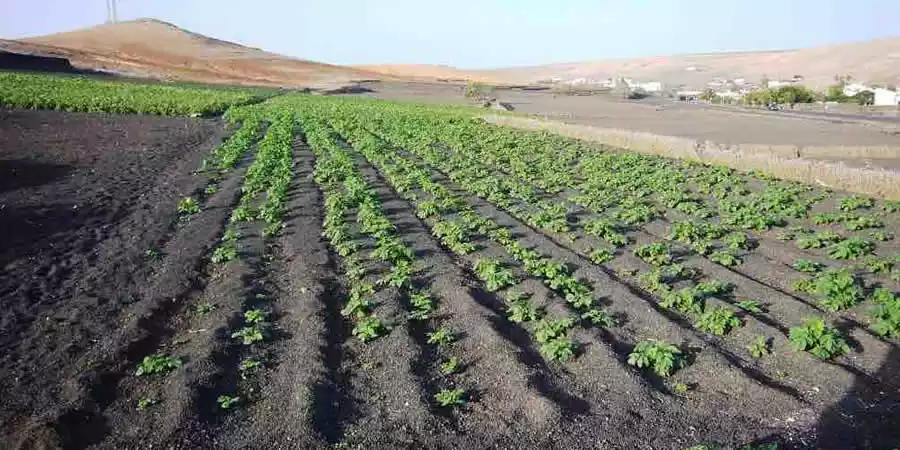
The enarenados are built by soils covered with lapilli (volcanic ash) Its purpose is to conserve the humidity of the subsoil. The soil is cleared of stones to cultivate and on this put a layer of lapilli 10 to 15 centimeters. The ground can maintain humidity even twelve months after the last rains fall, obtaining agricultural yields comparable to those of the irrigated land, with rainfall that hardly exceeds 100 mm per year. The predominant crop is the onion, but there are also melons, watermelons, sweet potatoes, legumes, potatoes, millet, and other cereals.
The variety of crops that have gone adapting to the Lanzarote agrosystem, must be directly related to its traditional isolation, which has caused the need for a certain self-sufficiency as far as food production is concerned. In addition, the depletion of the soils that originate the cultivation of sweet potatoes, watermelons, or melons, requires rotations with legumes and even fallow.
Lanzarote presents itself as a space in which it has been necessary to adapt the seeds to a highly arid environment. Suffice it to remember that both sweet potatoes such as watermelon and melon, are crops of tropical origin (Central Africa and Monsoon India), very thermophilic, and absorb enough humidity. Adaptation to the insular environment is evident also in some varieties of potatoes, as well as a variety of millet (dwarf millet, low in size and unique root system). The onion is the most widespread crop due to its high productivity, which is due, in part, to the exchange of seeds with other islands.
The artificial enarenados also play an important role in the fight against erosion, by allowing the infiltration of rainwater and avoiding a runoff. The difficulties of the enarenados lie in their short average life, from 15 to 20 years, after which it is necessary to renew them because the ashes have been mixed with the earth. To this is added the problem of tillage (fertilizer) and pest treatment.